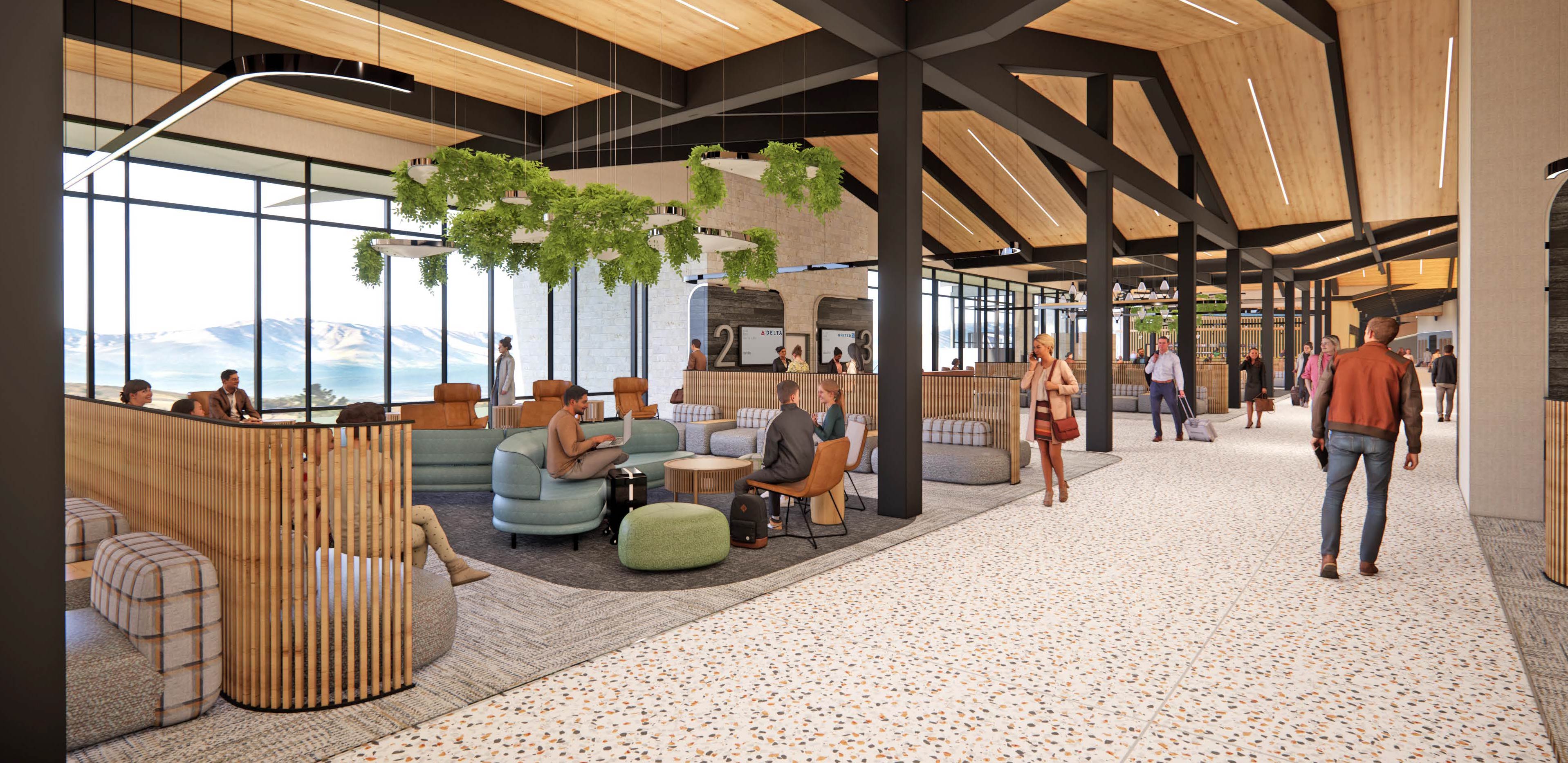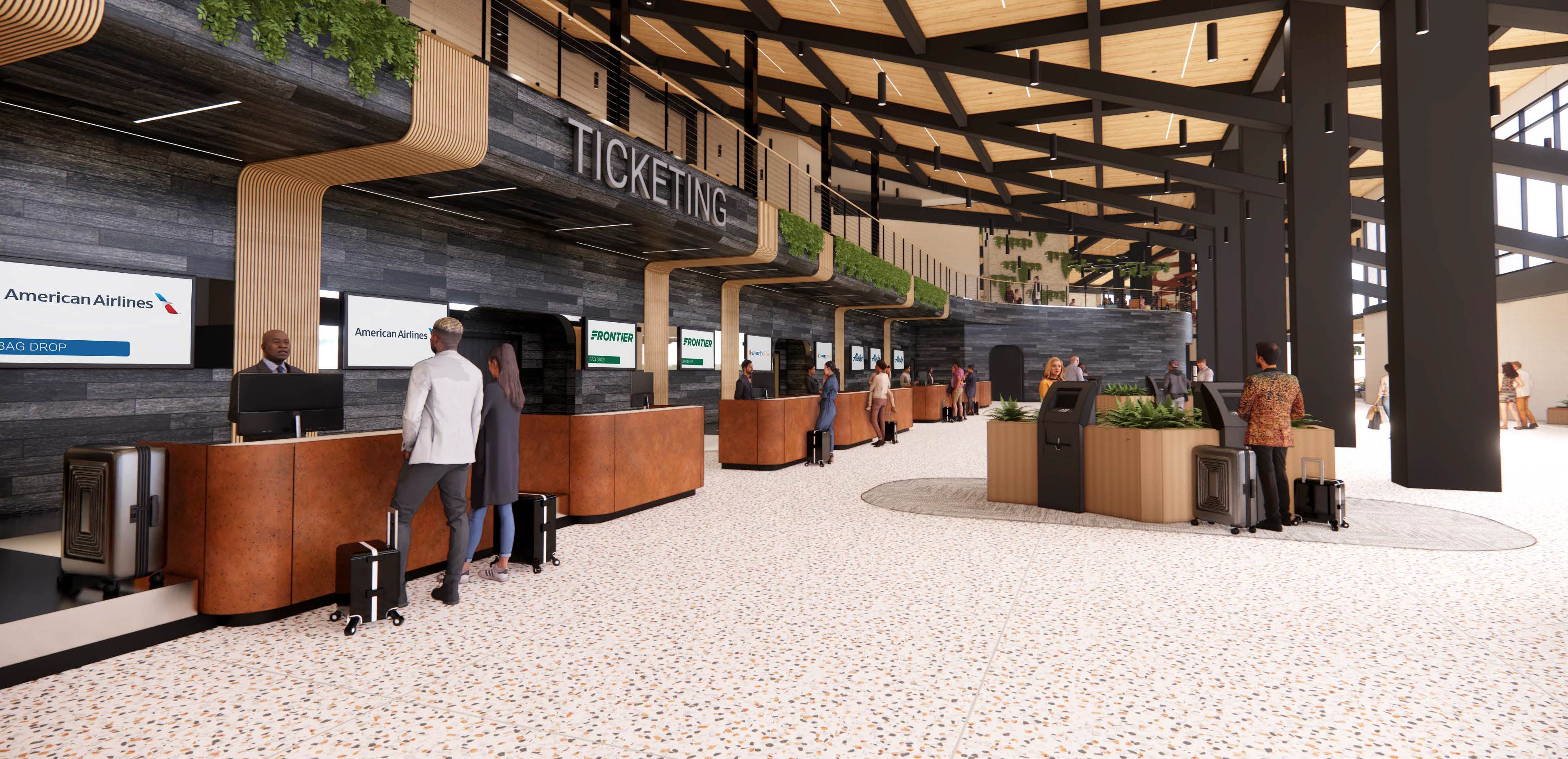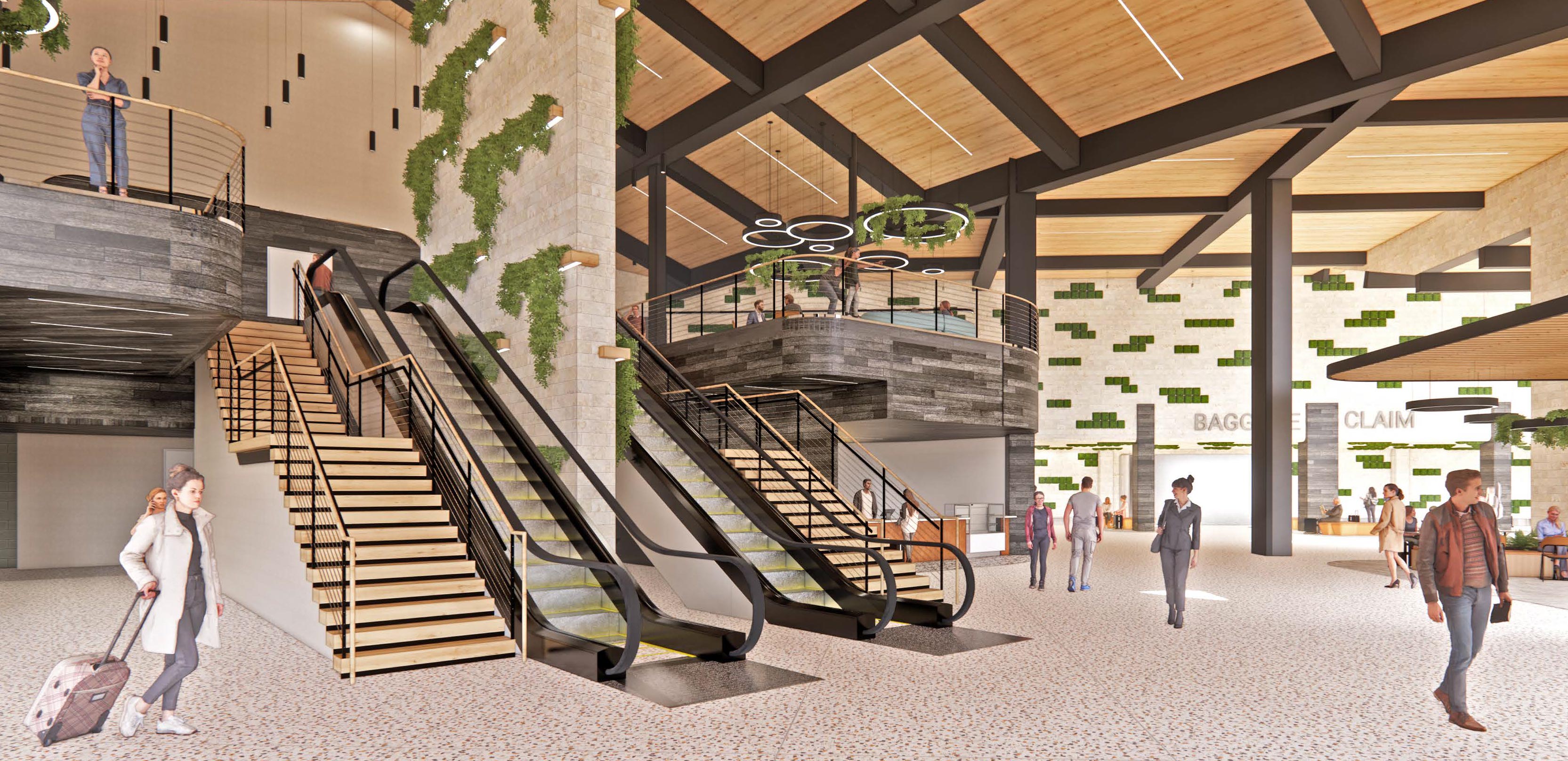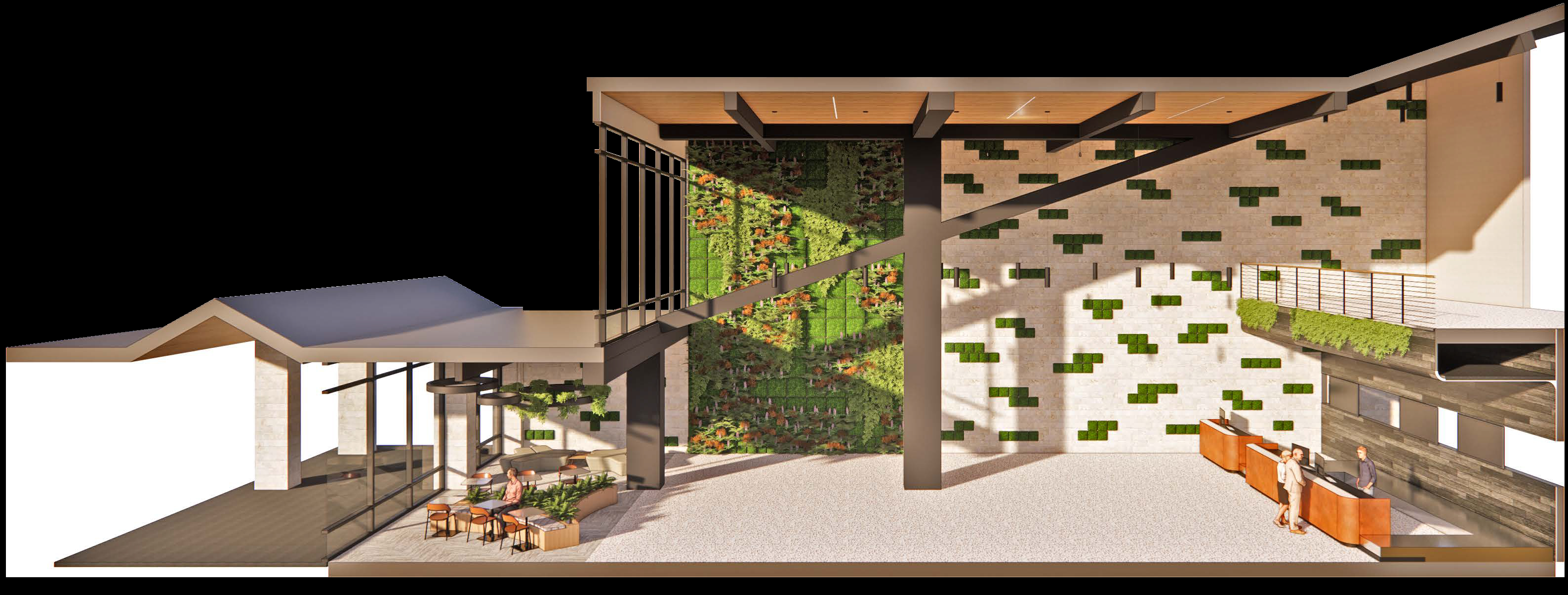Airport Terminal Design
Interior Architecture
Lauren Titsworth | Graduation Year: 2022
https://www.linkedin.com/in/lauren-titsworth/
- Executed: 5th Year
- Degree Path: Interior Architecture & Product Design
- Course: Advanced IA Design Studio
Regional airports have been a rapidly growing constituent of the aviation industry, facilitating regional economic growth as well as providing mobility to integrate remote parts of the country, especially when roads are not a feasible and safe option for travel (Button et al., 2009). In contrast to their large hub counterparts who constantly use a substantial part of their capacity, regional airports provide an opportunity for growth as their potential capacity is often only partly utilized. Additionally, the pre-flight airport experience is often regarded as the least favorite aspect of air travel. This is in large part due to numerous restricted procedures that introduce significant anxiety and stress, coupled with unintuitive layouts, long walking distances, and limited resting spaces (Bogicevic et. al, 2016). Coupled with the restrictive procedures put in place due to the COVID-19 pandemic, the airport terminal as it stands today can exacerbate the negative passenger experience significantly.
This research proposes that the introduction of biophilic and soft fascination elements such as plant life or waterfalls, adequate lighting, and exterior views of nature, can have a significant effect on the level of stress the passenger experiences. The data for this research was collected through a visual environmental preference survey consisting of 48 questions regarding various spaces that can be found in regional airports such as waiting areas, work/productivity areas, common/private rest areas, and check-in areas. The sample group involved 90 participants of various age groups and backgrounds who used a regional airport in the last 2 years. From there, the resulting data was analyzed and a guideline for designing regional airport terminal interiors was developed. Hopefully, the data collected and guidelines developed can aid in designing airport terminals that promote health and wellness and enhance the passenger experience.



